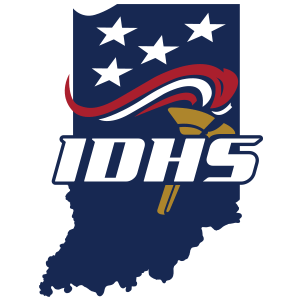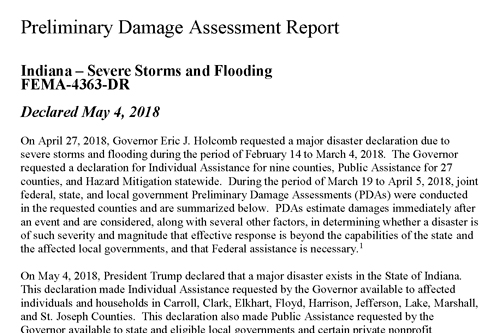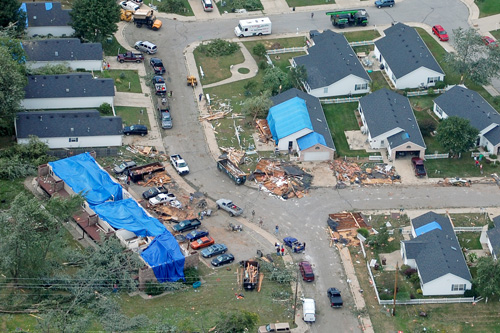

Helping Hoosiers Recover from Disasters
The Indiana State Disaster Relief Fund (SDRF) serves Hoosiers in times of disaster, when personal insurance and federal subsidies are unavailable or do not apply. Like in most states, the SDRF helps to streamline funding to needy residents looking to recover from disaster or weather events, which are becoming more severe and frequent across the country.
Additionally, the cost for communities to recover from disasters also has spiked considerably. Assistance from the Federal Emergency Management Agency (FEMA) is not always a guarantee, and states today are learning to better prepare for handling disaster and recovery costs at a more local level.
Since 2003, SDRF has grown and expanded to become a strong tool to help residents and local governments when they need it the most. Also, IDHS works closely with communities to support mitigation initiatives that lower the costs and risks of disaster damage.
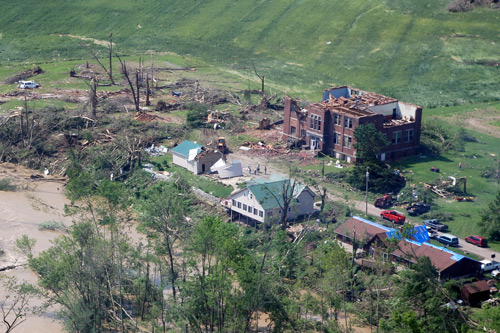
Despite a strong SDRF in Indiana, the funding is not sufficient to help everyone at a level to replace and restore all losses in a disaster. As of July 1, 2024, the maximum payout for the SDRF to individuals is $25,000. This means an individual potentially could receive up to that amount, but no amount is guaranteed.
Insurance remains the primary (and best) way Hoosiers can protect themselves in times of disaster. Insurance, including flood and earthquake insurance, is the best investment to ensure individuals can become "nearly whole" again following a disaster.
The SDRF, either through Individual Assistance or Public Assistance, is designed to assist in the recovery process. It is not intended to make a person or entity whole, nor be a replacement for insurance coverage. For qualifying local governments, the SDRF can help with repairing public roads and bridges, reimbursing some response costs or helping to clear debris to make roadways passable again. Importantly, Indiana Administrative Code Title 290 specifies the SDRF will be managed according to a 50% rule, which means that a single incident cannot use up more than 50% of the fund itself.

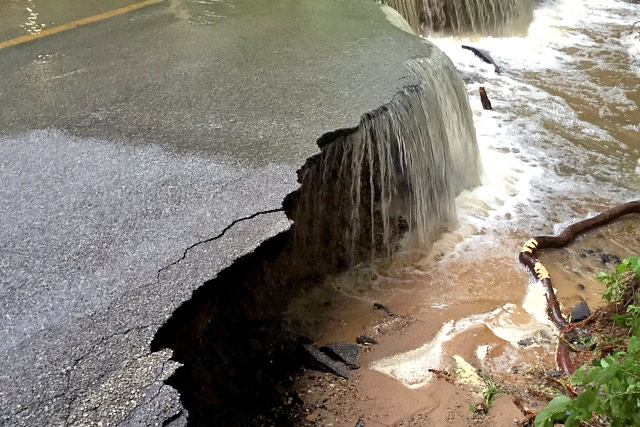

SDRF Changes: Improving Access to State Aid
Disasters are becoming more prevalent nationwide, and federal assistance formulas have been adjusted to raise the threshold that each state must meet for local disasters to qualify for federal aid. In short, it is harder than ever to meet federal thresholds for a federal disaster declaration and funding and resource assistance from FEMA.
States are learning to be more self-sufficient. Legislation in 2024 made improvements to Indiana's SDRF program (effective July 1, 2024) that made accessing aid quicker and simpler for Hoosiers navigating the recovery process post-disaster. Additional changes came as Indiana Administrative Code Title 290 was updated in 2024.
In general, the 2024 law changed how the SDRF can be used. It changed the requirements for an eligible entity to receive money from the fund and simplified the calculations used to determine how much an eligible entity may receive. It also increased the maximum award for individual assistance to a maximum of $25,000 (largest amount possible, but not guaranteed). Equally important, the new legislation removed the requirement that the U.S. Small Business Administration declare a local disaster, allowing SDRF funding to flow more quickly and directly to those who are eligible. This also makes it easier for public entities, such as municipalities and counties, to apply, because the state criteria can be used instead of federal criteria.
- Financial assistance amounts
Key Changes
- Simplified formula used to calculate how much funding local governments may receive
- As of July 1, 2024: Up to 50% multiplied by total cost of damage
- Prior to July 1, 2024: Up to half the total cost of damage - ($1 x entity’s population)
- Incentives for local communities to conduct disaster mitigation activities
- As of July 1, 2024: Increased award amount if community had taken proactive measures
- Prior to July 1, 2024: No incentives
- Increased maximum potential award for individuals recovering from a disaster
- As of July 1, 2024: $25,000*
- Prior to July 1, 2024: $10,000
*There is not a specific formula used, but up to $10,000 could be awarded for replacement of possessions and up to $15,000 could be awarded for home repairs.
As of July 1, 2024 Prior to July 1, 2024 Public Assistance (town, city, township, county) - Up to half the total cost of damage
or - Up to 65% of the total cost of damage if entity has taken certain mitigation activities
- Up to half of the total cost of damage - ($1 x entity's population)
Individual - Up to $25,000
- Up to $10,000
- Simplified formula used to calculate how much funding local governments may receive
- Eligible expenses
Key Changes
- Expanded scope of how local governments can use the fund to recover from a disaster
- As of July 1, 2024: Cost limited to "public property" (allows properties such as public parks to be eligible)
- Prior to July 1, 2024: Costs limited to "public facilities"
- Disaster mitigation projects eligible for funding
- As of July 1, 2024: Fund can be used pre-disaster to prevent damage from future disasters
- Prior to July 1, 2024: Fund could only be used post-disaster
As of July 1, 2024 Prior to July 1, 2024 Public Assistance (town, city, township, county) - Repair, replace or restore "public properties" damaged or destroyed
- Response costs incurred during a disaster
- Repair, replace or restore "public facilities" damaged or destroyed
- Response costs incurred during a disaster
Individual - Costs of repairing, replacing, restoring individual residential real or personal property damaged or destroyed
- Costs of repairing, replacing, restoring individual residential real or personal property damaged or destroyed
State - Response costs incurred by or at the direction of the state
- Disaster mitigation projects
- Response costs incurred by or at the direction of the state
- Expanded scope of how local governments can use the fund to recover from a disaster
- Conditions for use
Key Changes
- Indiana control over its own disaster assistance program by removing a provision that conditions use of the program on federal action
- As of July 1, 2024: Indiana decides when individual assistance may be provided
- Prior to July 1, 2024: Individual assistance could only be provided when the U.S. Small Business Administration declared a disaster
As of July 1, 2024 Prior to July 1, 2024 Public Assistance (town, city, township, county) - Damage to entity's public facilities exceeds $1 x the entity's population
and - Entity has declared a local disaster emergency
and - Entity requires state assistance
and - Governor declares a disaster emergency for an area including the entity
- Entity meets FEMA per capita threshold
and - Entity has declared a local disaster emergency
and - Damage to entity's public facilities exceeds $1 x the entity's population
and - Governor declares a disaster for a specific area
Individual - Incurs a loss due to a disaster
and - Located in a jurisdiction that has declared a local disaster emergency
and - Individual requires state assistance
- Incurs a loss due to a disaster
and - U.S. Small Business Administration declares a disaster
- Indiana control over its own disaster assistance program by removing a provision that conditions use of the program on federal action
Frequently Asked Questions
- Why is it harder for Indiana to obtain federal disaster aid?
The frequency and severity of disasters is increasing across the country, so FEMA continues to increase the damage threshold each state must meet to qualify for federal assistance.
- How does Indiana's disaster funding work?
The SDRF is funded by the state's public safety fee (tax on sale of fireworks), which also funds the Regional Public Safety Training Fund.
In addition, legislature-appropriated money and treasury funds support two contingency funds that support costs by state agencies during times of emergency.
SDRF State Statute and Regulations
- Will the increased maximum award amounts risk draining the fund?
No. If the 2024 changes had been in place during FY2023, the fund could have absorbed the additional costs.
Additionally, according to Indiana Administrative Code Title 290, the fund will be managed according to a 50% rule, which means that a single incident cannot use up more than 50% of the fund itself.
- How is a federal disaster declared?
The process for a federal disaster declaration begins with a local disaster declaration. After a local disaster has been declared by a county, if warranted, the Indiana governor can issue a state disaster declaration then request that the President of the United States declare a federal disaster.
A phase of preliminary damage assessments by state and federal officials determines the severity of the disaster. These assessments typically are conducted prior to the governor's request and are included as part of it, but the request may precede them if the severity of the disaster is very apparent.
The governor's request to the President includes information about state and local resources allocated to the disaster, as well as estimates of the kinds and amount of federal assistance needed.
If the presidential disaster declaration is made, it opens an assortment of federal assistance programs to help with the situation, as necessary.
Learn more about the process and federal assistance programs through FEMA's guide.
- How is a local disaster declared?
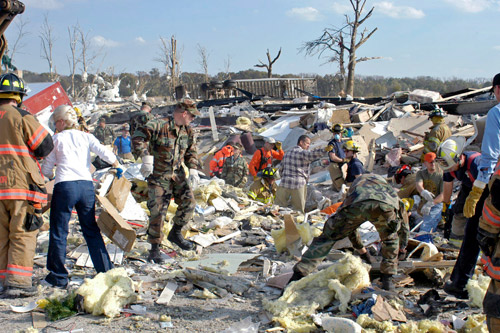

Every disaster starts and ends locally. When tragedy strikes, it is the local first responders who arrive at the scene to help the injured and restore order to the chaos. Those first responders work for a local community (city, town or county). When the county resources cannot meet the needs of its citizens, it requests help from the state (IDHS). That could be additional resources, personnel or equipment, but if the situation may require long-term efforts, the county could declare a local disaster.
Once a local disaster is declared, IDHS personnel begin damage assessments (in conjunction with local officials). Immediate needs, such as equipment and medical supplies, flow to the area as tabulations begin to determine an approximate dollar figure on the losses from the event.
If warranted, the governor can declare a state disaster. A state declaration also initiates the process for a federal review to determine if the incident meets the requirements and thresholds for a federal disaster declaration.
Regardless of the declaration process, it will be the local community that rebuilds and recovers long-term from a disaster.
- How much does it cost annually for the country to respond to disasters?
The cost of responding to natural disasters has been rising sharply in recent years. Below are some data resources to explore the impact of natural disasters on the state, national and global economies.
- Weather Disaster Costs and Frequencies (National Oceanic and Atmospheric Administration)
- Billion-Dollar Natural Disaster Recovery Costs (Harvard Gazette)
- Natural Disaster Facts And Statistics (Forbes)
- U.S. Natural Disasters Statistics and Facts (Statista)


Get Prepared: The Need for Insurance
Insurance is crucial to recovering from a disaster. The state of Indiana strongly encourages all Hoosiers to buy insurance to reduce the risk of financial hardships that can arise from the damage and destruction to homes and possessions. Insurance policies can cover much of the cost to repair or replace property, but both state and federal assistance programs only offer limited financial help where insurance falls short.
The average homeowners insurance policy may cost as little as about $1,000 a year yet save thousands, or hundreds of thousands of dollars, when disaster strikes. The median home value in Indiana is about $202,000, according to Indiana Housing and Community Development Authority, and a typical homeowners insurance policy would cover much of the cost to repair or replace the home. However, the maximum assistance that the SDRF could provide is $25,000 (largest amount possible, but not guaranteed).
The SDRF can be especially helpful where insurance coverage ends. For example, the cost to remove a single large fallen tree could be more than $10,000. An insurance policy might only cover a maximum of $500 for all debris removal, so a homeowner would have to pay out of pocket for the remaining cost to remove the tree. The SDRF could be used to alleviate some of that burden.
Homeowners and Renters Insurance
Homeowners insurance policies cover your family's personal belongings, your home and the contents of your home, such as furniture, appliances and clothing. Renters insurance is very similar to homeowners insurance, except the dwelling structure is not covered. However, if you rent an apartment or a house, the renters insurance policy will protect your possessions if lost due to fire, theft or other insured exposure (such as a disaster).
The Indiana Department of Insurance states, "Your home should be insured for at least 80% of its replacement value. With 80% coverage, the insurance company will pay losses in full, less any deductible, up to the face amount of your policy. If coverage is less than 80% of its current replacement value, a claim is settled on actual cash value — taking depreciation. To adequately insure your dwelling, you must know its replacement value. If you aren't sure of your home's value, play it safe and get help from your agent."
Flood Risks
Flood Risks
Flood Insurance
Standard homeowners and renters insurance policies do not automatically include flood insurance protection. Homes in high-risk flood areas with mortgages from federally regulated or insured lenders are required to have flood insurance. Even if flood insurance is not required, it is still important to buy it.
According to FEMA, 99% of all counties in the United States have experienced flooding since 1996, and Indiana experienced 77 flooding or heavy rain events in 2023 alone (NOAA).
To help pay for damage, Congress established the National Flood Insurance Program (NFIP), which is a federal program enabling property owners in participating communities to buy insurance to protect against flood losses.
NFIP policies oftentimes can be purchased through the same insurance agents who provide homeowners and renters insurance. Once purchased, NFIP policies can take up to 30 days to go into effect.
Get Help: Applying for Assistance
Many disasters do not reach the threshold for SDRF funds to become available, so having insurance in place is a critical step to take now, before a disaster occurs. Although SDRF funds are intended to assist those who are uninsured or under-insured, they will not be sufficient to "fully recover" following a disaster.
When a disaster rises to the level that SDRF funds become available, IDHS will announce the opportunity to apply for public entities or individuals, depending on the situation.
As part of the application process, individuals will be required to file a claim with their insurance first. After factoring in what the insurance company is paying, IDHS makes site visits to inspect the damage. Afterward IDHS makes a determination of how much SDRF money may be awarded. If approved, funds are deposited into a recipient's banking account.
Learn more below about the two programs that facilitate the SDRF.
